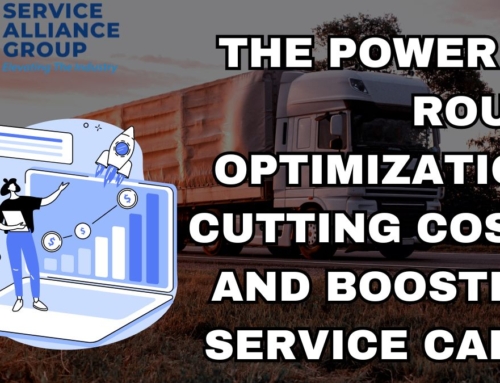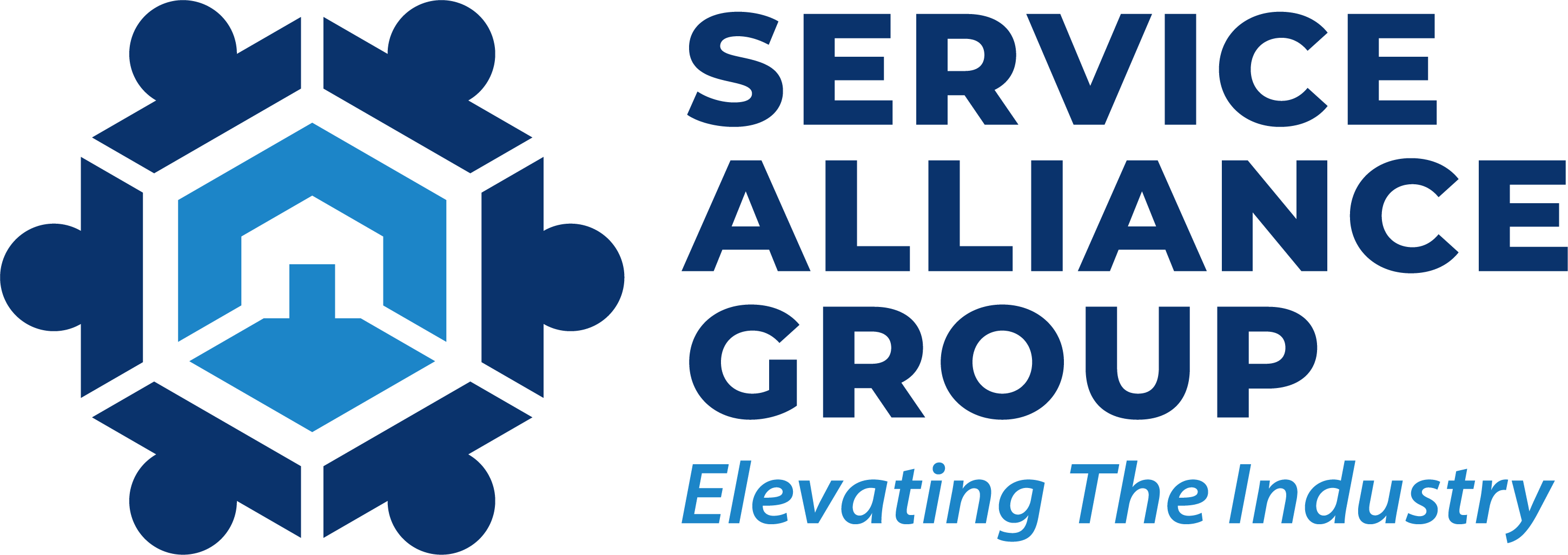What is the value of a customer?
Customer value is determined by the value a product or service possesses to them, taking into account factors such as price, quality, and benefits. Understanding the value of your customers is crucial for businesses, especially those in the home service industry, since it directly affects your profitability and growth.
Building long-term relationships and increasing customer lifetime value requires delivering customer value. Businesses can build a loyal customer base by consistently meeting or exceeding customer expectations, which keeps them and converts them into advocates, generating word-of-mouth referrals and attracting new customers.
A good customer service experience adds value to a company’s customer base. Timely responses, effective problem-solving, and friendly interactions can increase customer loyalty and satisfaction. A personalized experience tailored to the individual needs and preferences of the customer goes a long way in building a strong bond between them and the organization.
To calculate a customer’s value, it is important to consider not only the immediate profits generated by their purchases but also their potential for future revenues through repeat purchases and referrals. Home service companies can grow by focusing on customer value and exceptional customer service.
Loyal Customers
You need to build a loyal customer base for your business to thrive, as loyal customers are more likely to purchase from you repeatedly and by word-of-mouth promoters of your brand. We will explore how loyal customers contribute to the overall value of a home service company in this article.
It is possible to gain valuable insights into the importance of loyal customers by studying factors such as customer loyalty, average customer lifespans, and the impact of marketing efforts. The home service industry relies heavily on loyal customers to drive growth and success. Let’s examine what loyalty means and why it is crucial for business owners.
What is loyalty?
A customer’s loyalty refers to the commitment and tendency to consistently choose a particular brand or business over its competitors, which is crucial for building strong customer relationships and fostering customer retention. Long-term success depends heavily on customer loyalty, which increases customer satisfaction and leads to repeat business and valuable referrals from friends and family.
Businesses often implement loyalty programs to reward and retain loyal customers. They offer incentives and rewards to customers who consistently engage with a brand, such as frequent buyers or social media followers. Customer loyalty programs strengthen the connection between a business and its customers by recognizing and appreciating their loyalty. Businesses can increase customer loyalty and satisfaction by offering exclusive benefits, discounts, or personalized experiences.
Implementing a customer loyalty program
Businesses can measure the impact of their efforts by implementing customer loyalty programs. By implementing loyalty programs, businesses can reward customers for their continued patronage. A business should tailor its rewards program to the individual needs and preferences of each customer to maximize the value of their rewards. It is also important for businesses to create a personalized experience for each customer.
Here are some examples of customer loyalty programs that an appliance repair company or HVAC company can offer:
- Points or rewards program: Customers earn points for every dollar they spend or for every service they use. These points can be redeemed for discounts on future services, free service calls, or other rewards.
- Referral program: Customers earn rewards for referring new customers to the company. This is a great way to attract new customers and build brand awareness.
- VIP program: This offers exclusive benefits to valued customers, such as priority service, discounts, and gifts.
- Free service call: Customers receive a free service call after using the company’s services several times. This is a great way to show appreciation for loyal customers and encourage them to continue using the company’s services.
- Discounts on maintenance plans: Customers receive discounts on maintenance plans for their appliances or HVAC systems. This is a great way to help customers keep their appliances and systems running smoothly and avoid costly repairs.
- Education and training: Customers receive free education and training on caring for their appliances or HVAC systems. This is a great way to help customers extend the lifespan of their appliances and systems.
- Gifts and prizes: Customers are entered into a drawing for prizes, such as gift cards, appliances, or HVAC systems. This is a great way to generate excitement and excitement among customers.
The best customer loyalty program for an appliance repair or HVAC company will depend on the company’s specific goals and target market. However, the programs listed above can effectively reward customers for their loyalty and encourage them to continue using the company’s services.
Here are some additional tips for creating a successful customer loyalty program for an appliance repair company or HVAC company:
- Make the program easy to understand and participate in.
- Offer rewards that are valuable to customers.
- Promote the program to customers through email, social media, and other channels.
- Track the results of the program and make adjustments as needed.
By following these tips, appliance repair companies, and HVAC companies can create customer loyalty programs that will help them attract and retain customers.
Advantages of having loyal customers
Home service companies benefit enormously from having loyal customers. Loyalty contributes to long-term relationships and repeat business for any business with loyal customers. Customer retention rates and profitability increase due to these valued customers’ deep connections with the brand.
Generating a steady revenue stream is one of the main advantages of having loyal customers. When a company consistently meets its customers’ needs and expectations, these customers are likely to continue using its services. Recurring customers increase sales and lower acquisition costs since loyal customers are less likely to switch.
Customers loyal to a company are more likely to recommend the company to friends, family, and colleagues, resulting in word-of-mouth referrals. As a result of these referrals, the company grows and expands its customer base.
Home service companies must prioritize providing superior customer value and quality service to cultivate loyal customers. Businesses can build trust and customer loyalty by providing exceptional service, exceeding customer expectations, and resolving issues promptly and effectively.
With their excellent customer service and reliable delivery, companies like Zappos and Amazon have earned the trust and commitment of their customers. In these companies, customer loyalty and satisfaction have significantly impacted customer retention and spending.
Tracking word-of-mouth referrals
To increase customer lifetime value, home service businesses must track word-of-mouth referrals. Having satisfied customers recommend a company’s services to their friends, family, and colleagues enhances its reputation and is a powerful endorsement.
Through word-of-mouth marketing, these referrals can quickly spread, increasing the visibility of a business on social media. By sharing and liking recommendations, potential customers are attracted to them, creating a positive buzz online. The amplification effect can significantly reduce customer acquisition costs as the company acquires new customers organically and efficiently.
Incentives for existing customers to refer others can help businesses improve customer satisfaction and retain existing customers by further strengthening the impact of word-of-mouth referrals. A satisfied customer who refers others becomes more engaged and invested in the company’s success. Furthermore, when a referred customer converts and becomes loyal, the customer’s lifetime value also increases.
To gauge the effectiveness of their marketing efforts and improve their strategies, home service businesses can track word-of-mouth referrals and assess the return on investment.
Average Customer Lifespan
Home service businesses must understand the value of their customers through analysis of the average customer lifespan. It encompasses the entire relationship between the business and the customer, from the first interaction to when the customer ceases to use the services. A business can determine how long each of its customers stays with them on average by calculating the average customer lifespan, which provides insight into customer retention rates and the effectiveness of its acquisition strategies. Using this information, businesses can measure the success of their marketing campaigns and develop strategies to engage and retain customers.
The average customer lifespan also helps businesses determine the future revenue they can expect from each customer, determine how they will spend on marketing, and how to grow their business. To maximize customer lifetime value and cultivate strong and lasting customer relationships, businesses should focus on extending the average customer lifespan.
Factors affecting customer lifespan
Several factors influence the customer lifetime of a business and ultimately determine its value to a home service company.
The lifespan of a customer is determined by customer satisfaction. On the other hand, dissatisfaction can lead to quick departure and even negative word-of-mouth referrals. Satisfied customers are likelier to remain loyal and do business with a company.
Customer retention is also heavily influenced by product quality. A home service company with high-quality products and services will likely retain customers, while a company with poor product quality will lose customers.
Another key factor affecting customer retention is customer service. Friendly, responsive, and efficient customer service fosters customer loyalty and creates a positive experience. However, inadequate or ineffective customer service can lead to customer dissatisfaction and loss of business.
Changing to a competitor offering better value or more attractive offers may also reduce customer lifespan with a certain home service provider.
Customers’ priorities and preferences can change significantly throughout their lifetime. Therefore, home service companies must adapt their offerings to meet the changing needs of their customers. Without such action, business may be lost and customer lifespans shortened.
By proactively addressing these factors that affect customer longevity, home service companies can enhance their customer relationships and increase customer retention rates.
Calculating the average customer lifespan
You need to assess the number of years that each customer continues to purchase from your business to calculate the average customer lifespan for your home service business.
- First, gather data on how often your customers use your home service company. For example, you may track each customer’s visits or purchases during the year.
- The next step is to calculate the average number of years a customer stays engaged with your business. By dividing the total number of days a customer visits your company by the number of days in a year, you can estimate the average number of years a customer is active.
An average customer purchase would be 33.33 (100 visits divided by three years) if a customer visits or purchases 100 times in three years.
The effectiveness of your acquisition and retention efforts can be evaluated by understanding the average customer lifespan. Business owners can use this calculation to make informed decisions about marketing campaigns, customer engagement strategies, and loyalty programs. As a result of future customer retention rates, it can also provide insights into revenue and growth opportunities.
Example of calculating customer lifespan
In Sam’s business, he fixes everything from washing machines to refrigerators. He realizes that understanding how long a customer uses his services can help him make smart business decisions.
- Step 1: Gathering Data on Customer VisitsSam keeps a record of every time a customer calls him for a repair. He notices:
- Customer A called him 10 times in the past 2 years.
- Customer B called him 5 times in the past 3 years.
- Customer C called him 20 times in the past 4 years.
- Step 2: Calculate the Average Number of Years a Customer EngagesBased on the data:
- Customer A: 10 visits in 2 years = 5 visits a year
- Customer B: 5 visits in 3 years = 1.67 visits a year
- Customer C: 20 visits in 4 years = 5 visits a year
- Step 3: Calculate Average Customer LifespanSince the goal is to understand how long, on average, a customer continues to use Sam’s services:Add all the years: 2 (A) + 3 (B) + 4 (C) = 9 years Average years per customer = 9 years ÷ 3 customers = 3 yearsThis means, on average, a customer uses Sam’s appliance repair service for three years.
For Customer A, 10 visits over 2 years would be an average of 5 visits a year. However, the example shows 100 visits over 3 years, which is 33.33 visits a year. The numbers seem high for an appliance repair business, but it’s used to illustrate the concept.
- Using the InformationKnowing that a customer usually sticks around for 3 years, Sam can now decide how to extend this relationship. Maybe he offers a loyalty discount for customers in their 3rd year or sends a reminder for appliance check-ups.
Customer Acquisition Costs (CAC)
A business’s customer acquisition costs (CAC) are critical, including home service companies. A company’s CAC is the cost incurred to acquire a new customer. Marketing efforts, advertising campaigns, and sales team salaries are included in the cost. CAC is crucial to determining customer acquisition strategies’ return on investment (ROI) and helps businesses make informed marketing budget decisions. Regardless of the industry, company size, or marketing channels, CAC must be kept to a minimum to maximize profitability.
By evaluating CAC, home service businesses can determine if their marketing strategies are effective and make necessary adjustments to enhance business growth. Home service companies should optimize marketing efforts and minimize CAC to drive the business forward.
What are CACs?
Customer acquisition costs (CACs) are an important metric for home service companies to measure marketing campaigns and revenue projections. Businesses can make informed resource allocation decisions by calculating CACs, which measure the costs of acquiring new customers during a particular period. Calculating CACs allows businesses to determine how effective their marketing efforts are.
By dividing the total acquisition costs (like advertising, campaign expenses, and sales team salaries) by the number of new customers acquired during the same period, CACs can be calculated. Insights into the average cost of acquiring each customer can be gained from this measurement.
CACs and customer lifetime value (CLV) must be considered when evaluating marketing campaigns. A customer’s total revenue throughout their relationship with a company is known as CLV. Businesses can determine the value of each customer by comparing CAC to CLV.
Some businesses subtract the CAC from the CLV to determine a more accurate figure of the customer’s value and to determine the return on investment.
Home service companies can optimize their marketing strategies, allocate resources efficiently, and make informed decisions for business growth by tracking CACs and understanding the relationship between them and CLV.
How to calculate the value of each customer
To understand the worth of their customer base, home service companies need to calculate the value of each customer. Businesses can make informed decisions about marketing, customer retention strategies, and overall business growth by determining individual customer values and calculating the average.
- To determine the customer value, analyze historical data and observe the average amount of money each customer spends per transaction.
- Next, determine each customer’s average purchase frequency rate, which measures how often they make a purchase within a specific time frame. To determine the individual customer value, multiply each customer’s average purchase value by their average purchase frequency rate.
Using the individual customer value calculations, average them to determine each customer’s average value. This represents the average value of each customer.
To make strategic decisions regarding customer acquisition costs, marketing campaigns, and customer retention, businesses must calculate the potential future revenue each customer can bring. As a result, businesses can identify high-value customers who contribute significantly to their revenue and prioritize efforts to retain and nurture these relationships by understanding their customer values.
Thus, determining the value of each customer involves determining the individual values and calculating the average value. Businesses can increase customer satisfaction, loyalty, and growth by analyzing average purchase value and frequency rate metrics.
Example of calculating customer value
Tom is a plumber with several regular customers who call him for various services. He wants to know how much each customer is worth to his business so that he can prioritize his marketing and service strategies.
1. Step 1: Average Amount Spent Per Transaction
Tom has three main customers:
- Customer A calls Tom whenever a faucet is leaky and usually pays $50.
- Customer B has a large house and often has bigger issues like blocked drains. This customer usually pays $200 for every job.
- Customer C calls for annual maintenance and pays $100 each time.
To understand the average amount these customers spend with him, we can write it down or even put it in a simple spreadsheet.
2. Step 2: Average Purchase Frequency Rate
How often does each customer call Tom in a year?
- Customer A calls four times a year.
- Customer B calls two times a year.
- Customer C calls once a year.
3. Step 3: Individual Customer Value
Now, let’s calculate how much each customer is worth in a year.
- -Customer A: $50 (amount per call) x 4 (times a year) = $200 a year
- Customer B: $200 x 2 = $400 a year
- Customer C: $100 x 1 = $100 a year
4. Step 4: Average Customer Value
To determine the average customer value for Tom, we’d add all these yearly amounts and then divide them by the number of customers.
- Total Value = $200 (A) + $400 (B) + $100 (C) = $700
- Average Customer Value = $700 ÷ 3 customers = $233.33
So, on average, a customer is worth $233.33 to Tom’s Plumbing Services each year.
5. Strategic Decisions
Even though Customer B calls less frequently, Tom realizes that Customer B brings in more revenue. It doesn’t mean Tom should neglect the others, but he knows where the majority of his revenue comes from now, so he should offer special discounts or incentives to Customer B to ensure they remain loyal and happy.
Visualization:
If you can do so, this can be visually represented in a pie chart or a bar graph. For instance, three bars, one for each customer, show their yearly worth to Tom’s business. This would allow Tom (or anyone else) to see which customer brings in the most money quickly.
The main takeaway is that Tom should invest his time and resources appropriately to maintain good relationships and grow his business by understanding the value of each customer.
About The Author
Mike Carson is an SEO expert, web designer, internet marketer, and co-founder of Service Alliance Group. Mike runs his Marketing Agency, Appliance Marketing Pros, in Joliet, IL. Mike and his team specialize in helping home service businesses optimize their websites for organic leads and search traffic using scientific, trust-based SEO methods. He is passionate about the power of digital marketing and loves to share his insights with others.






